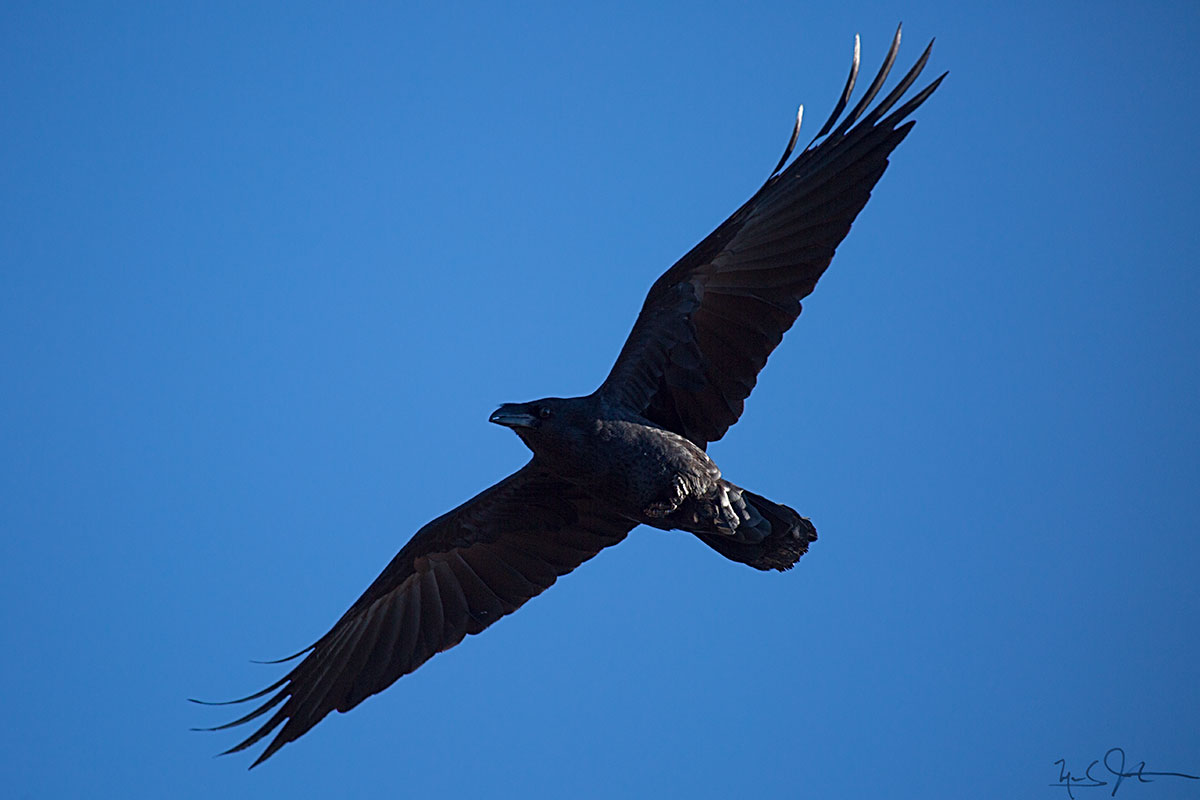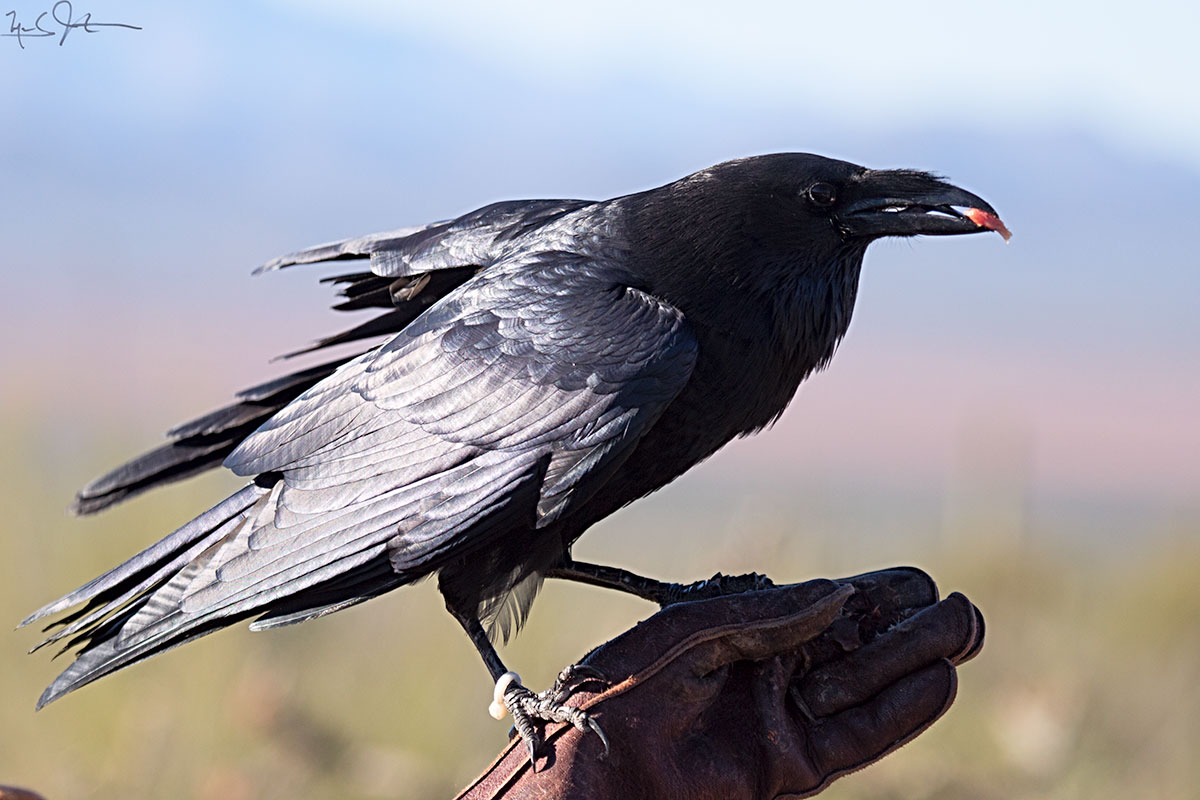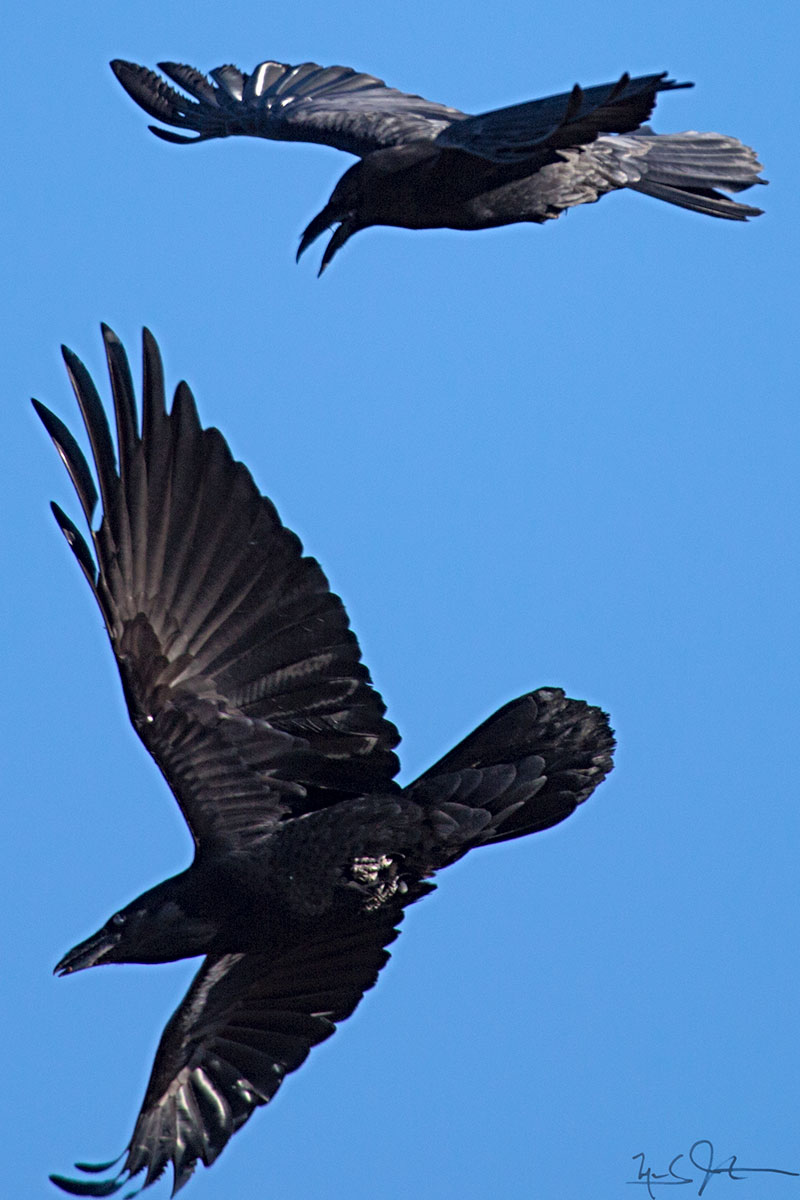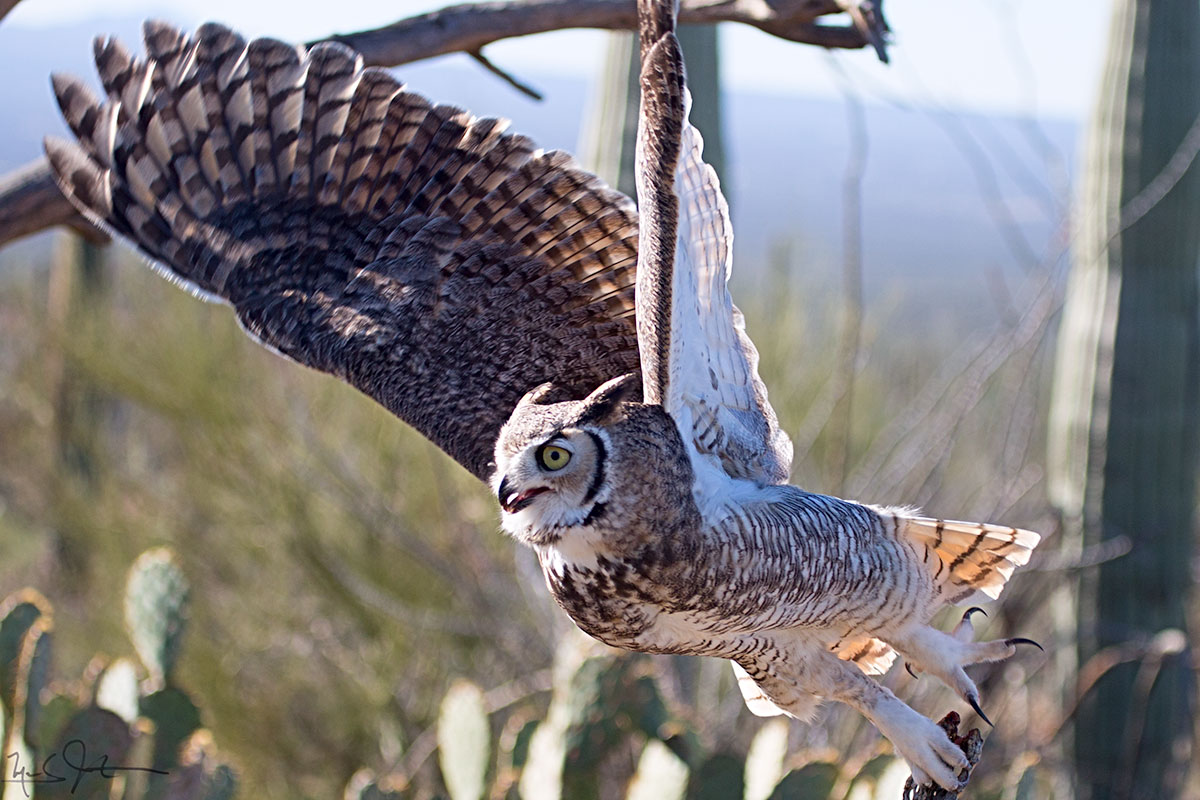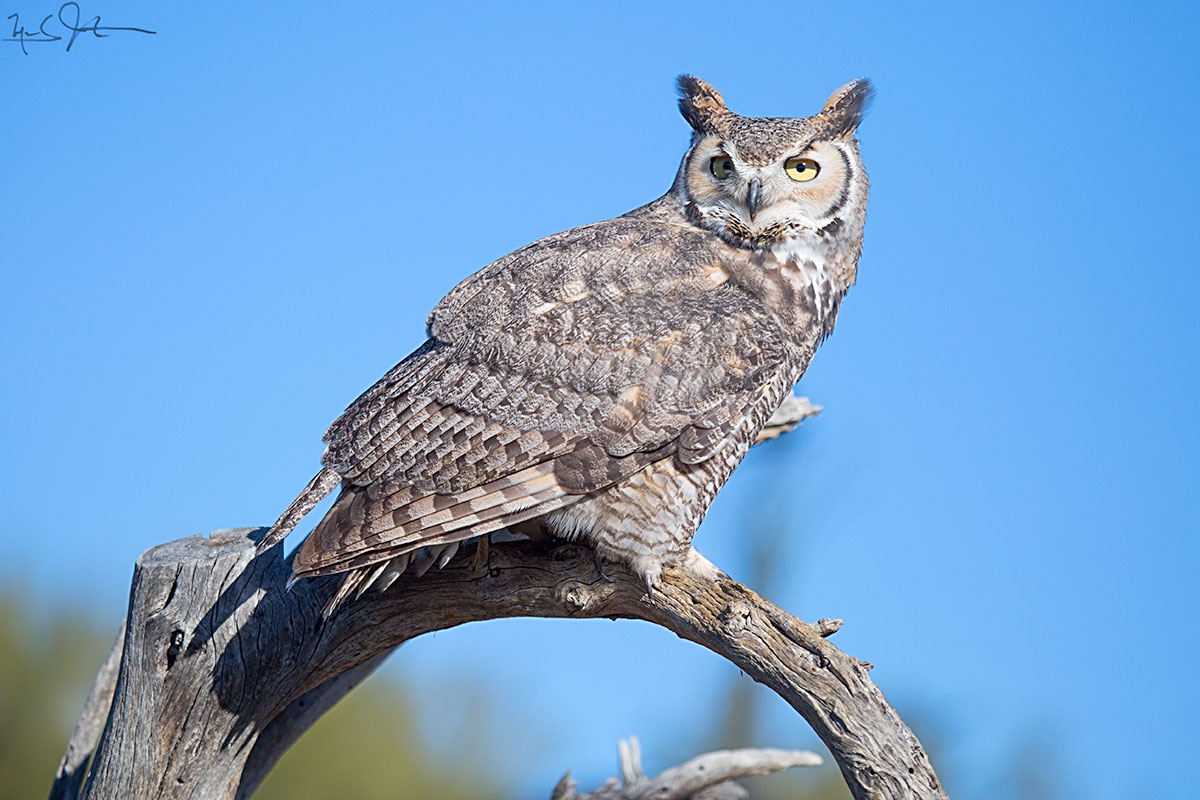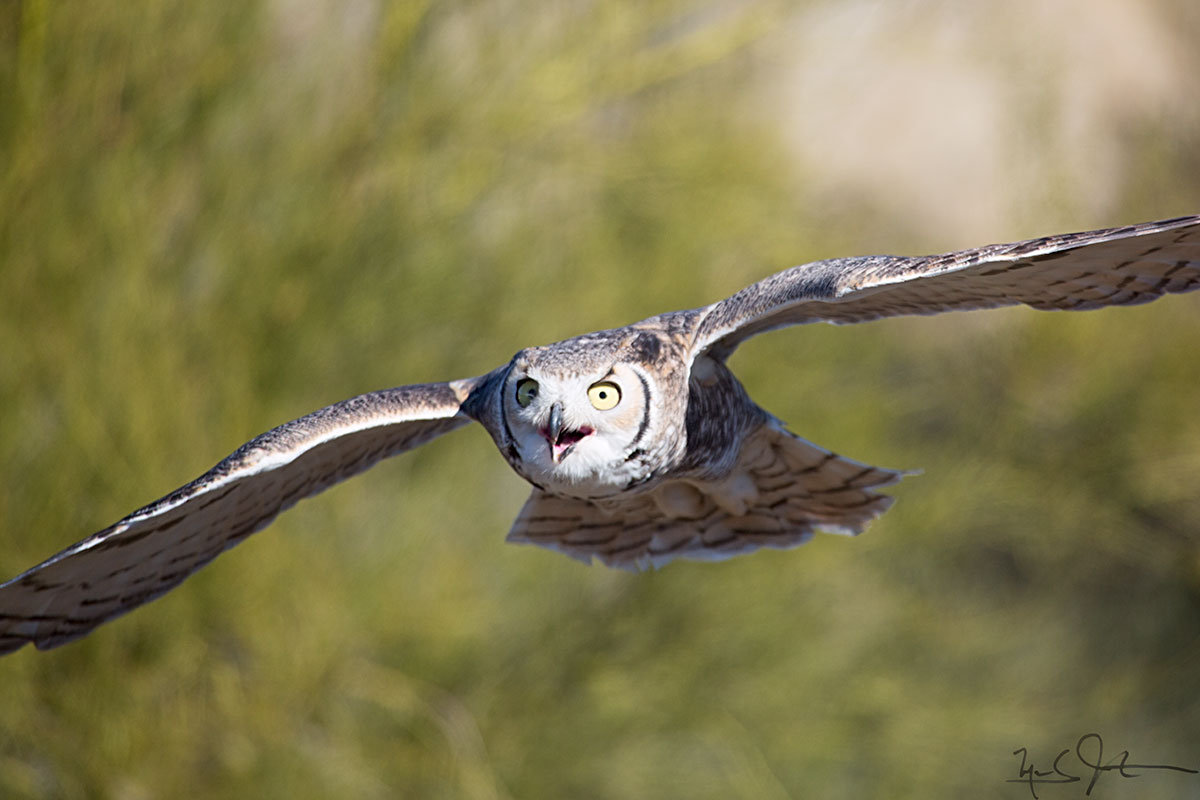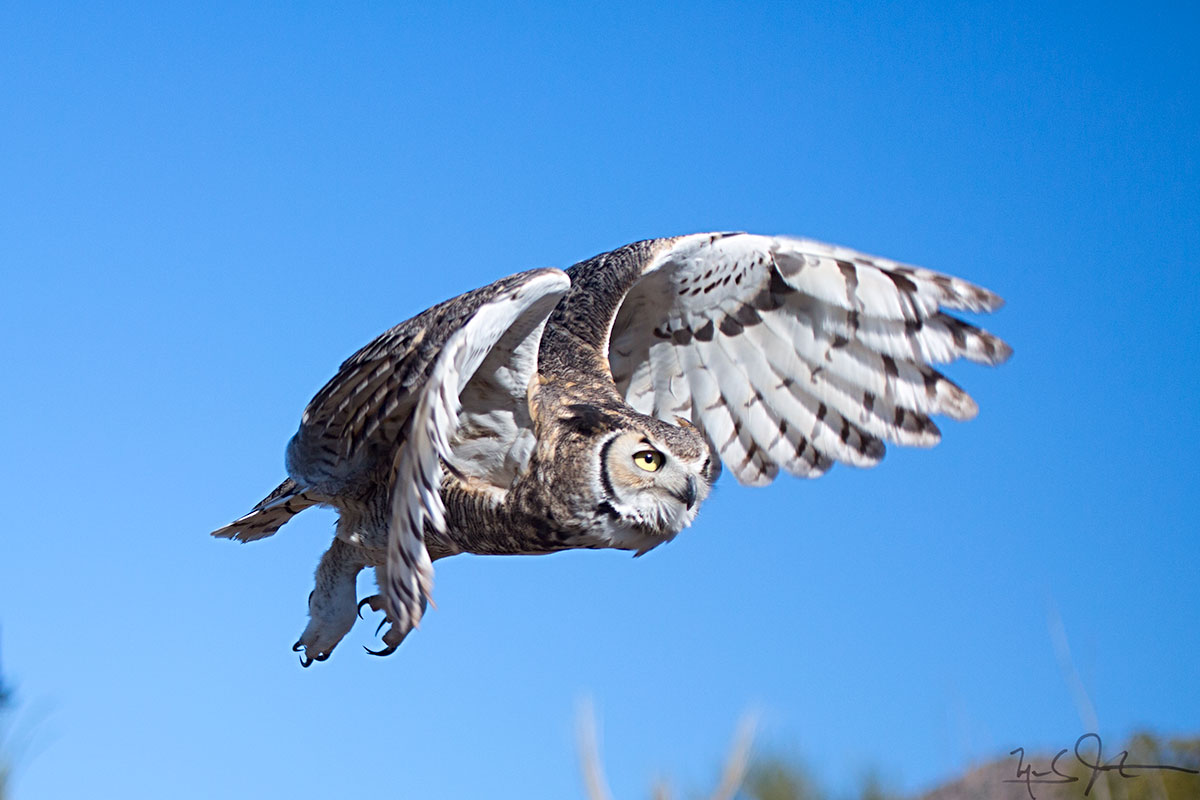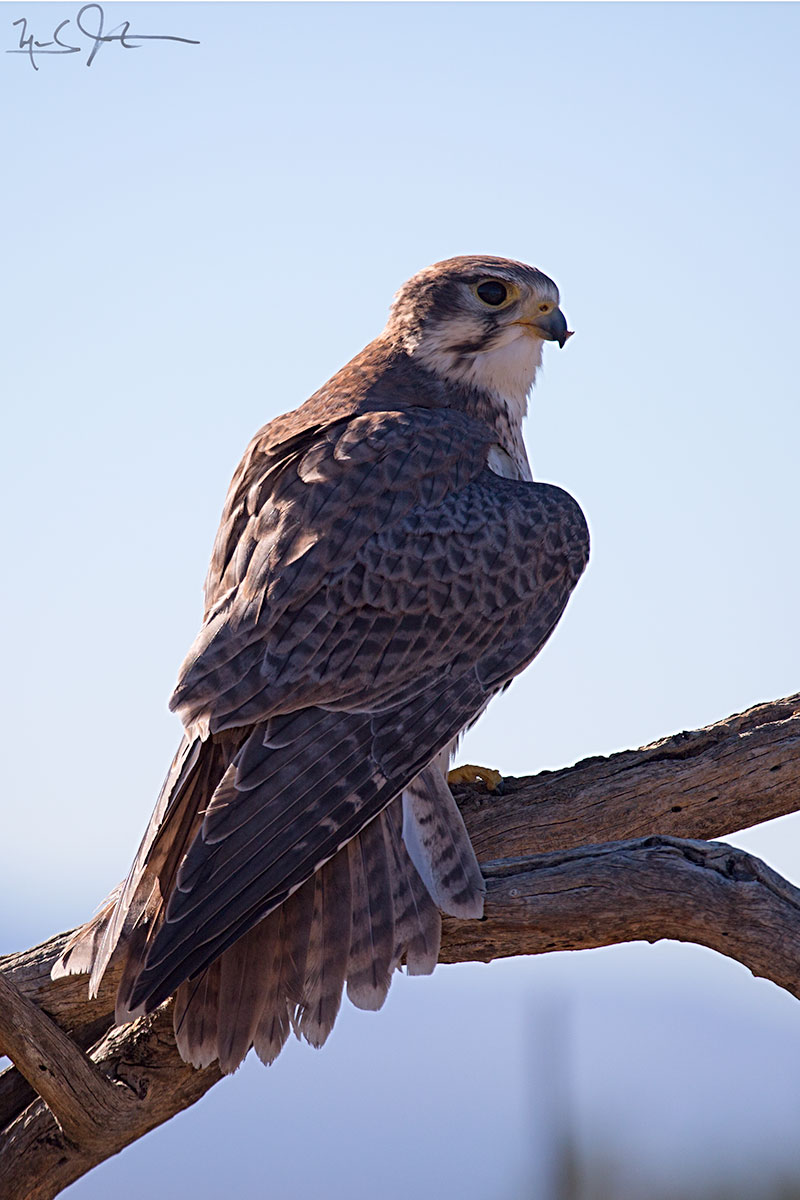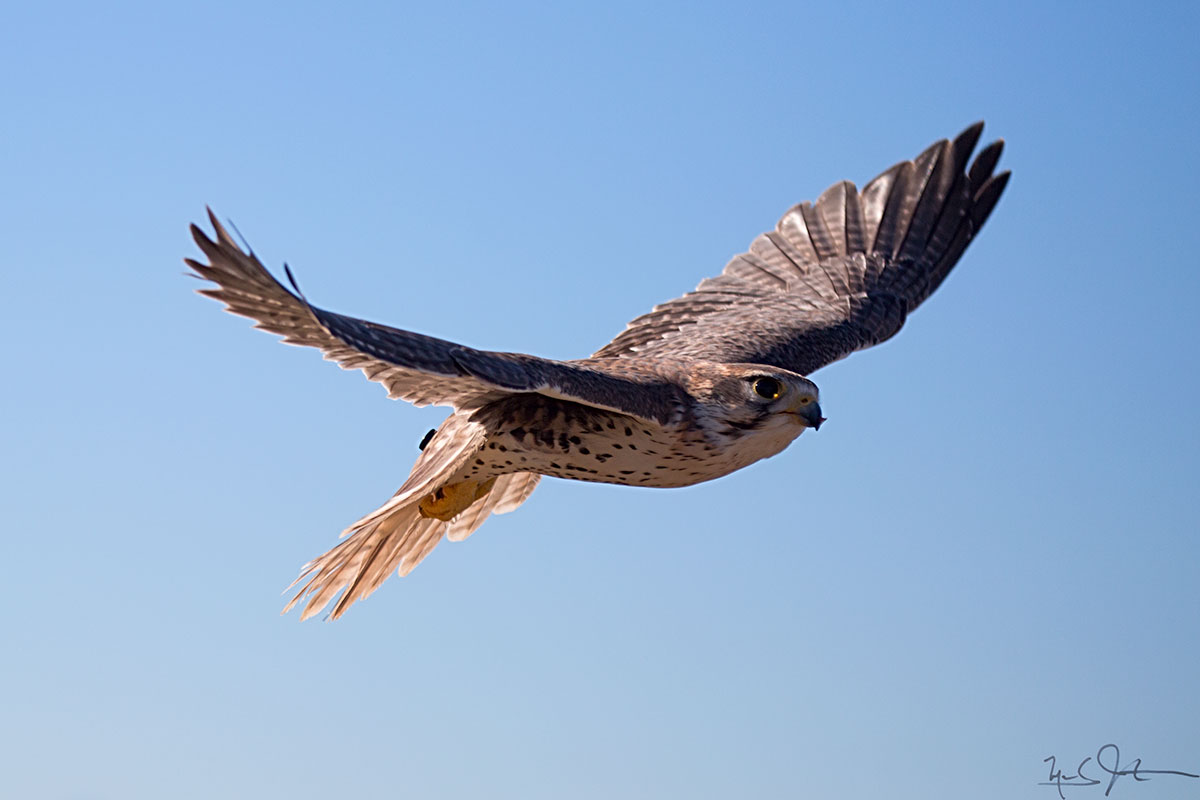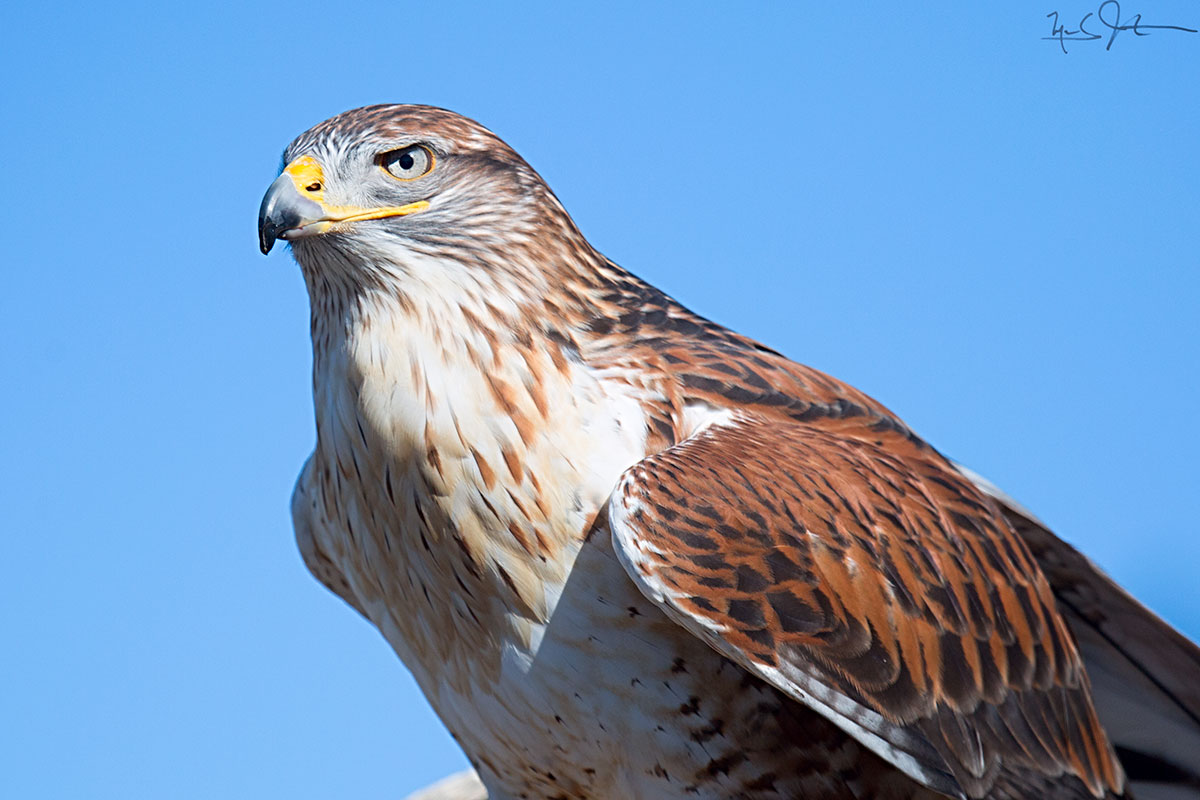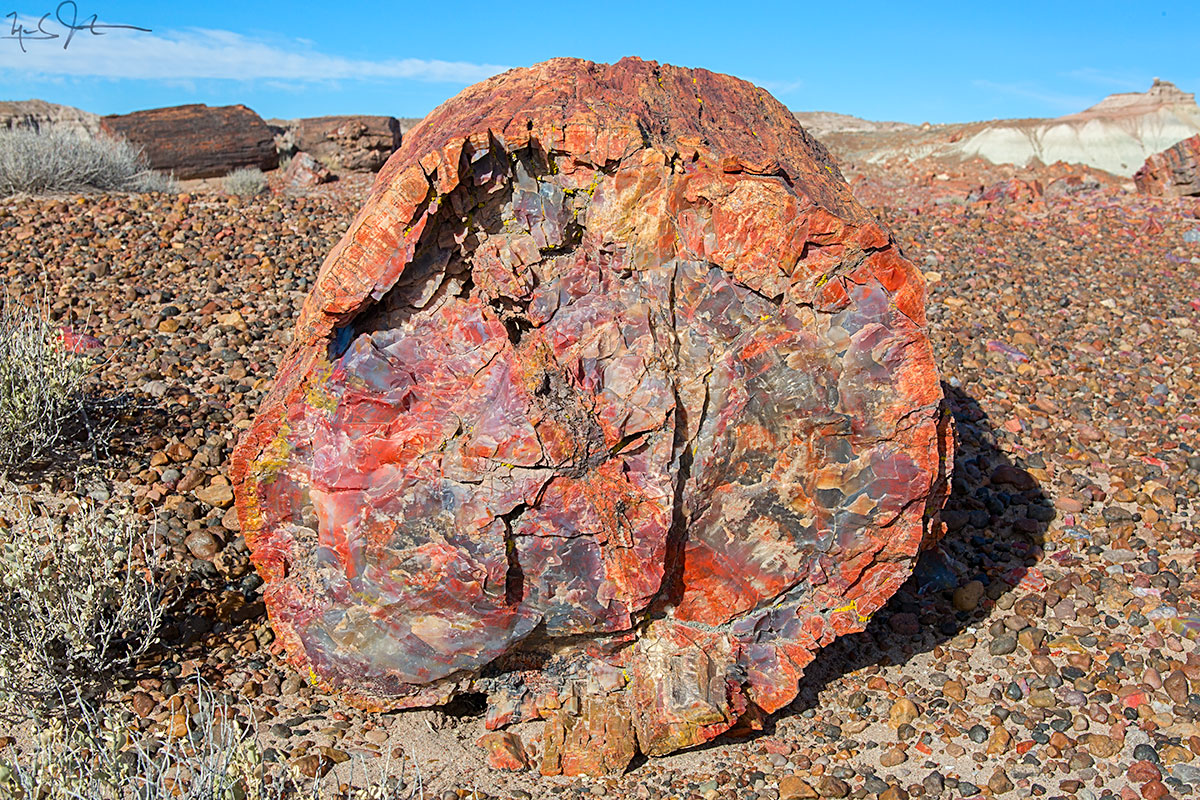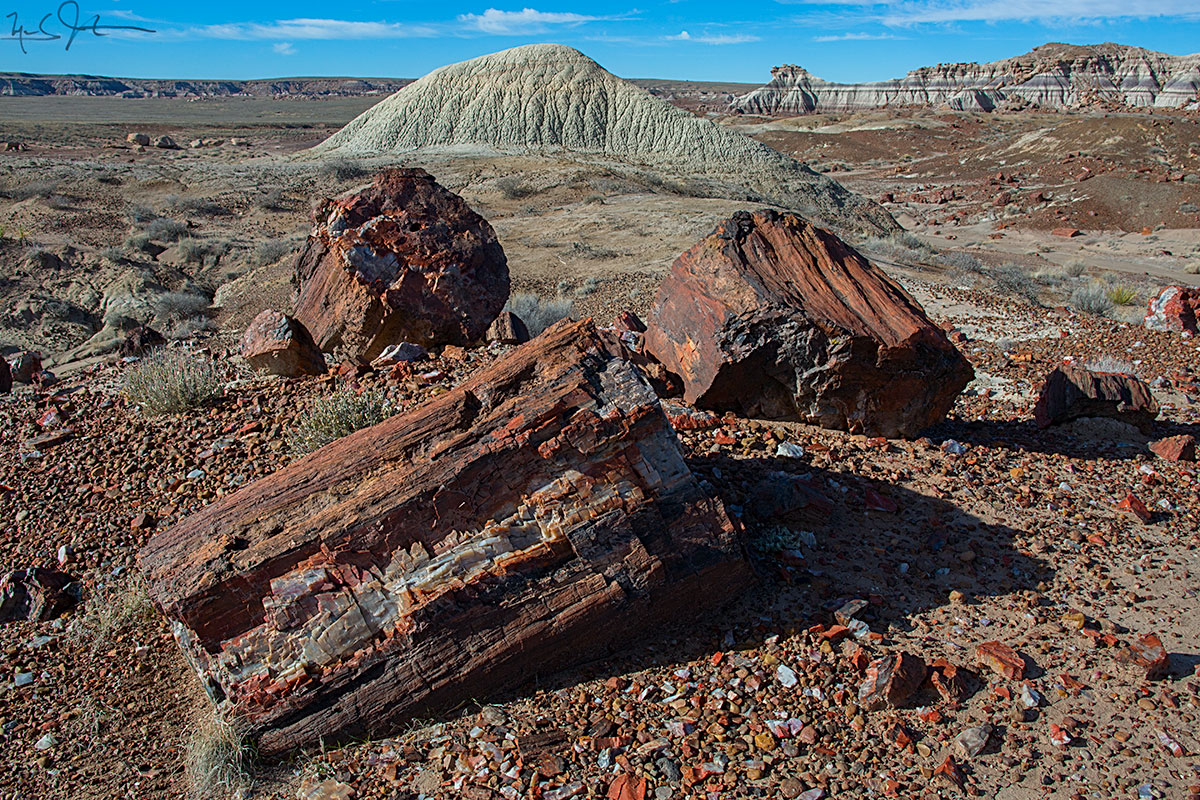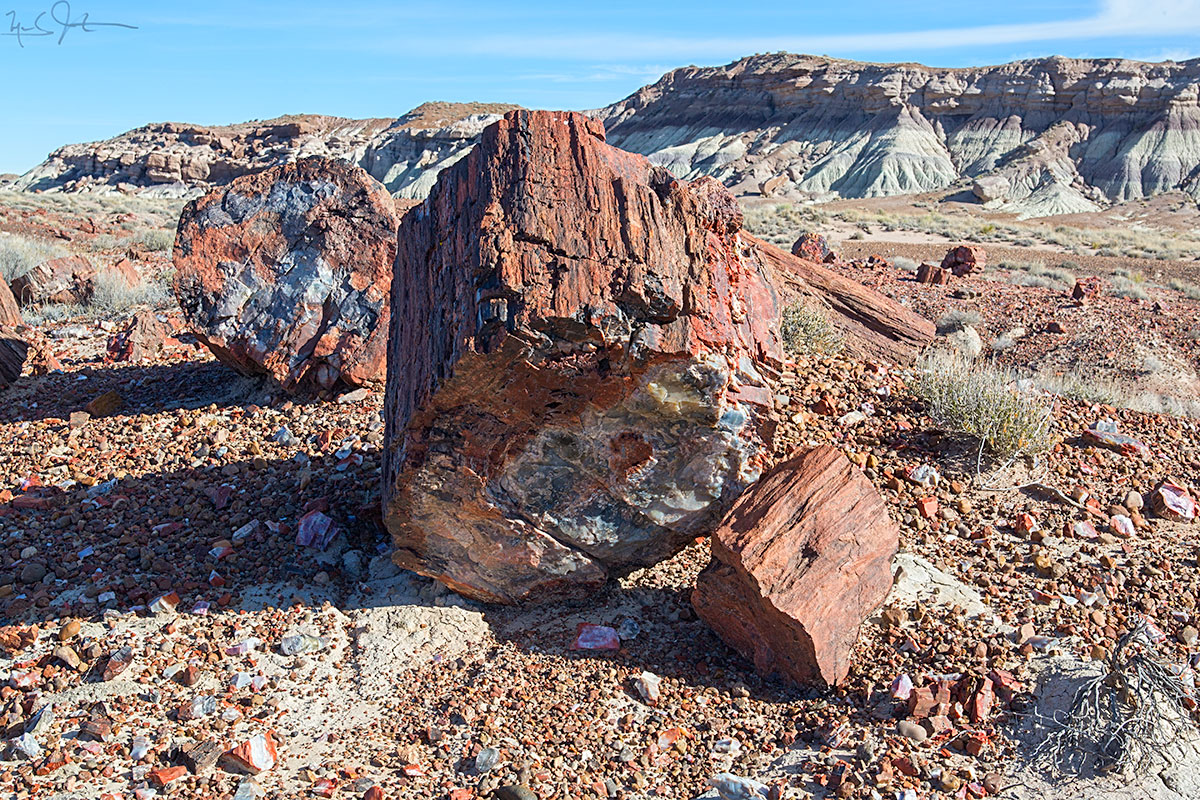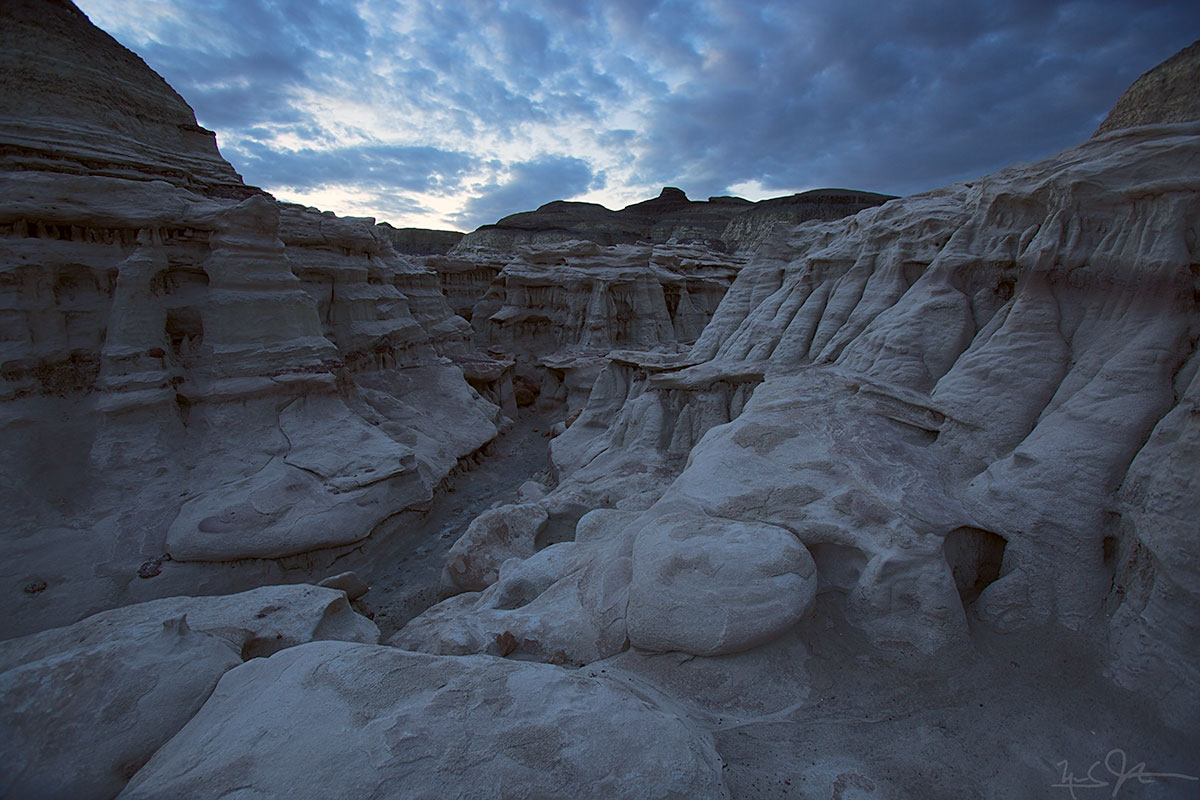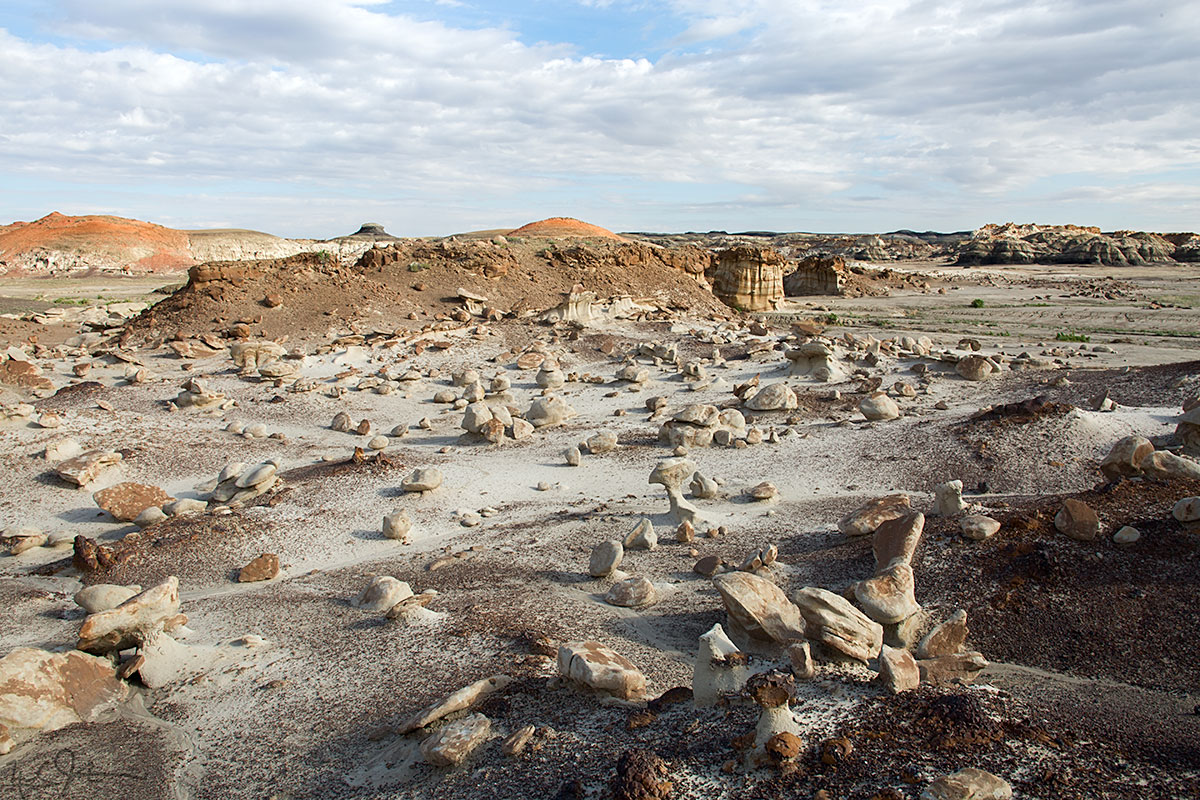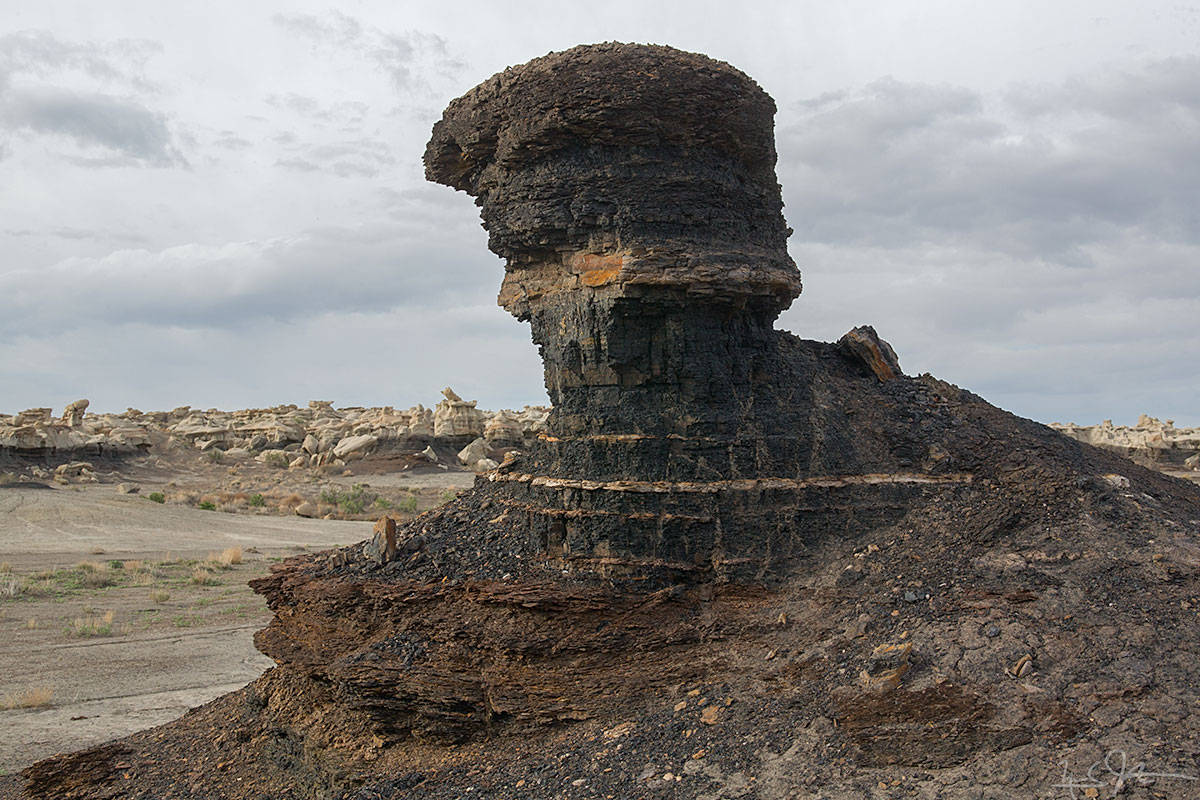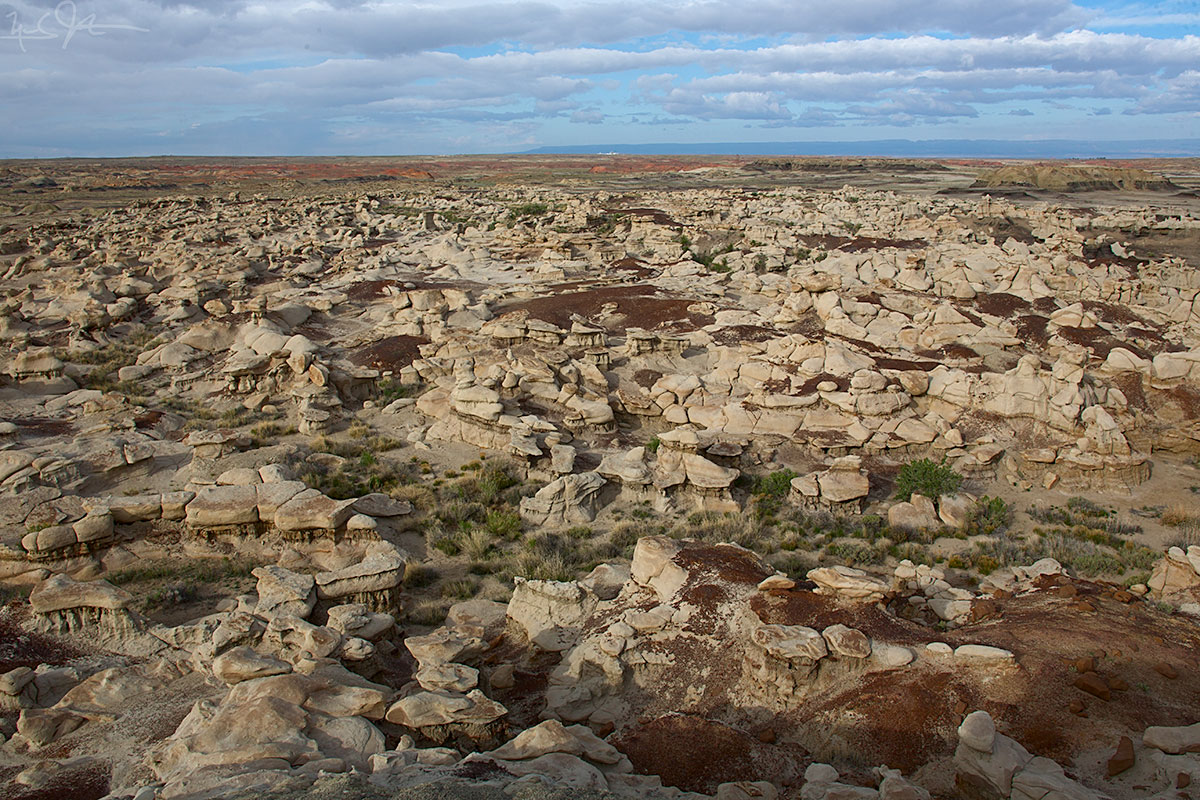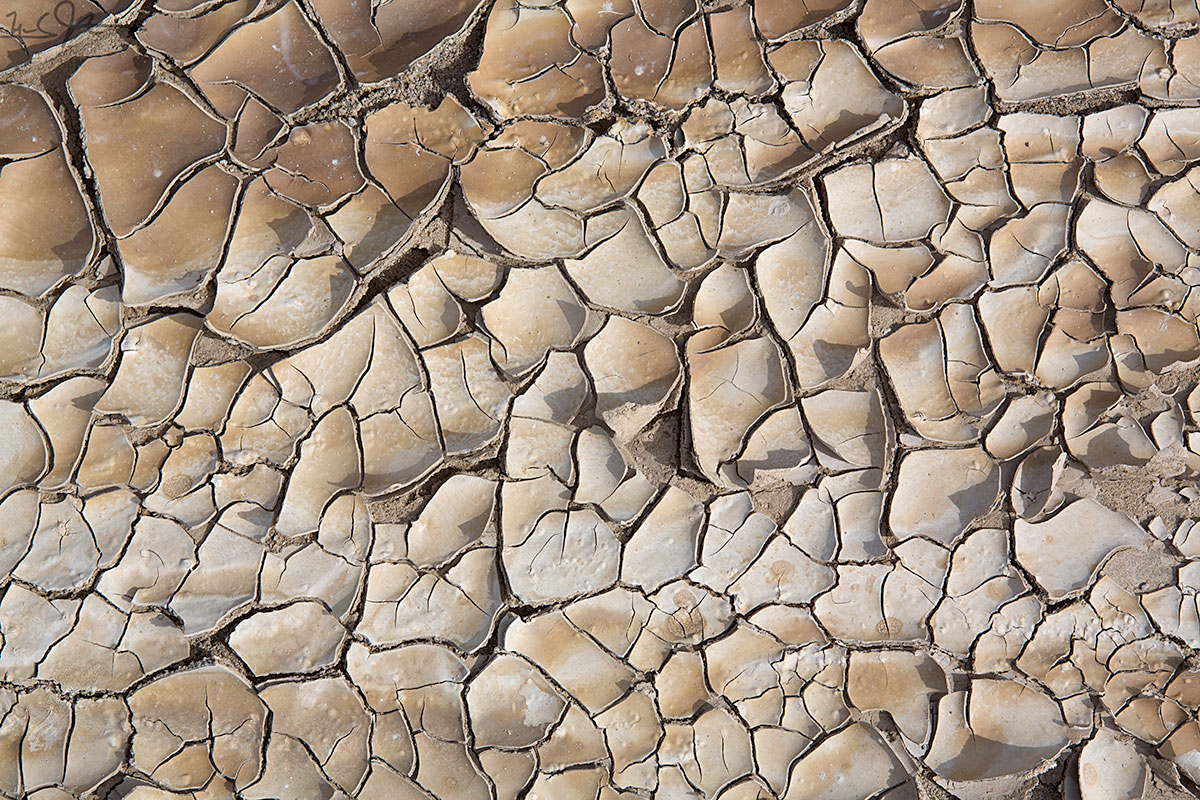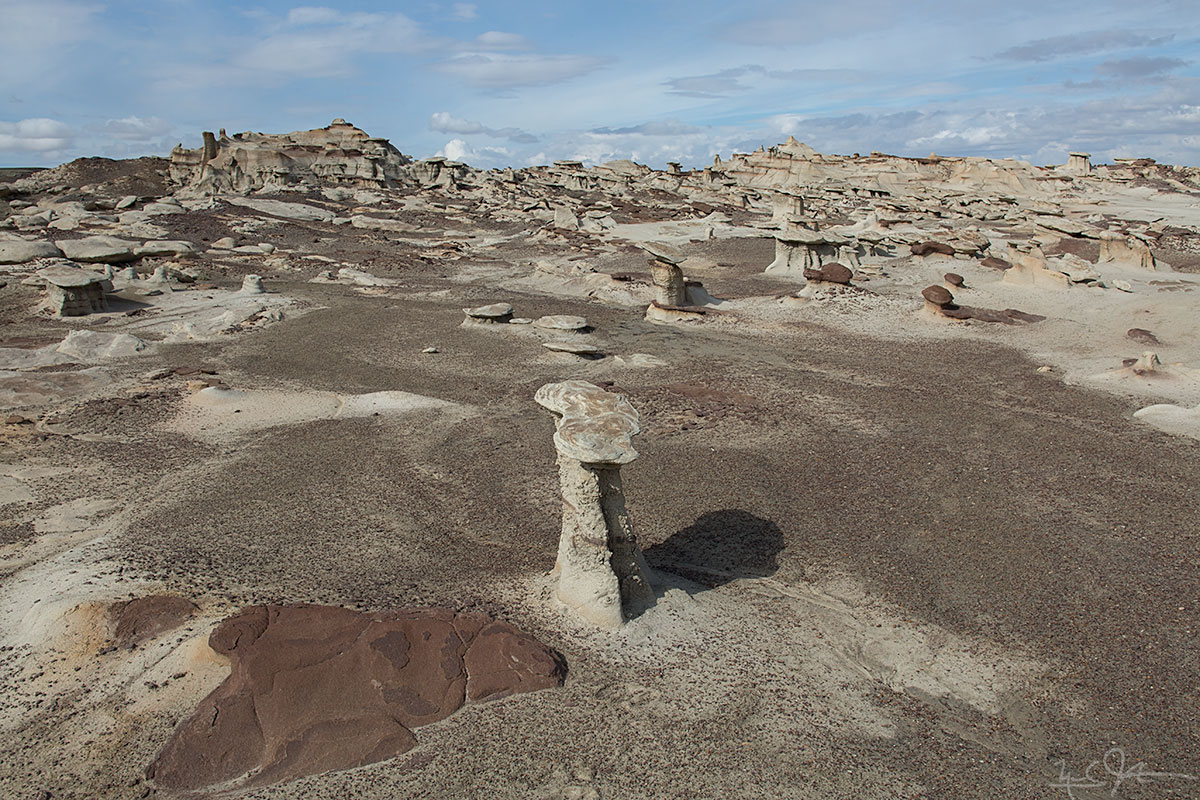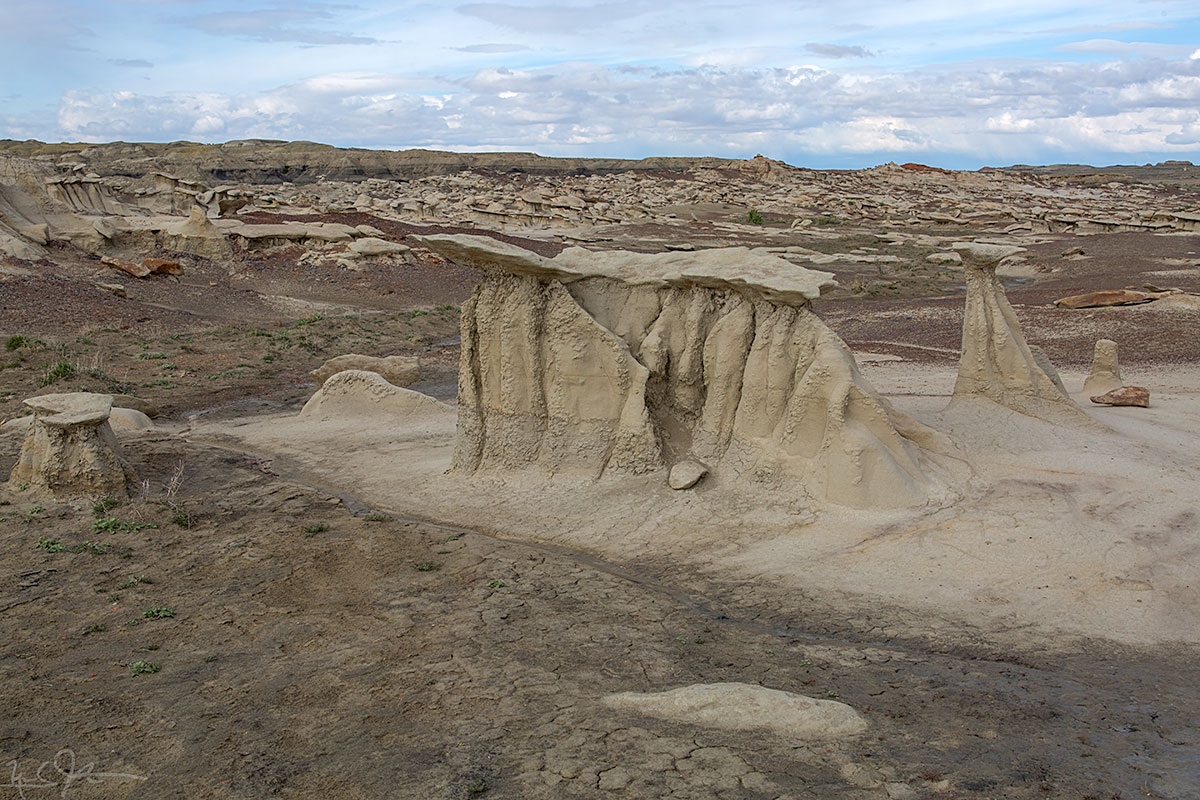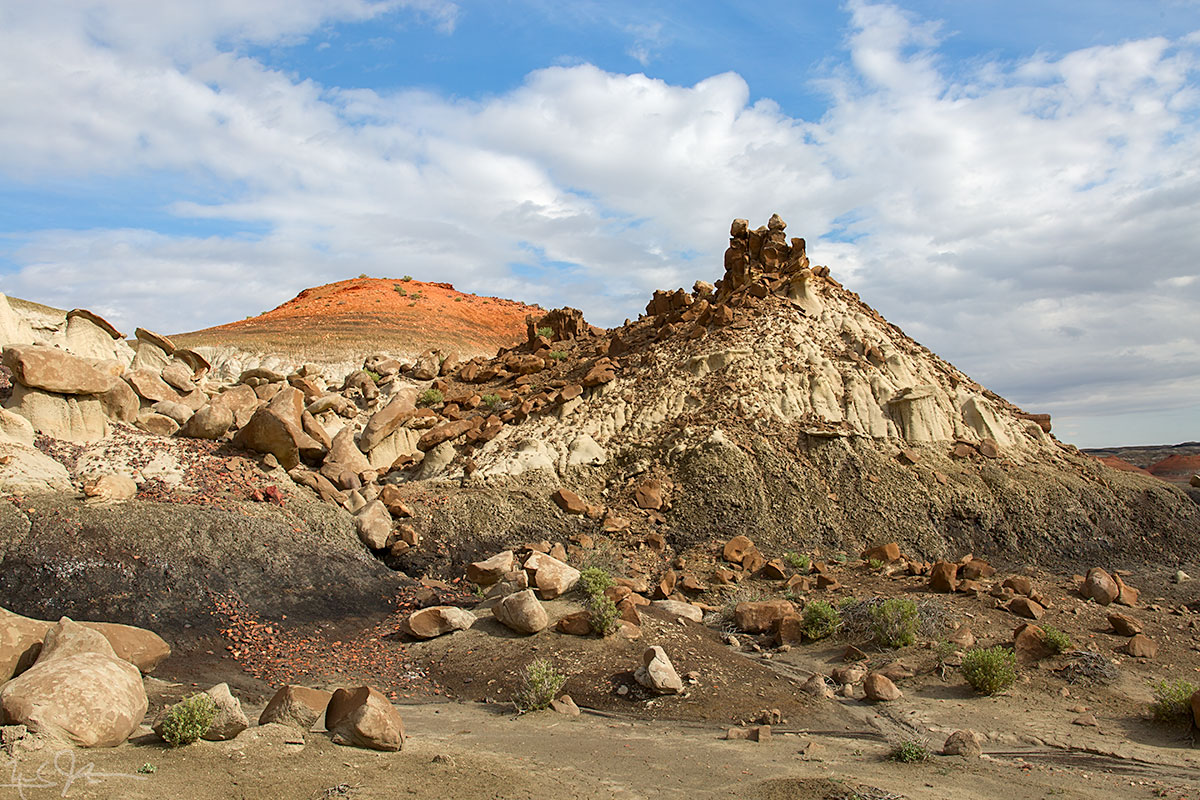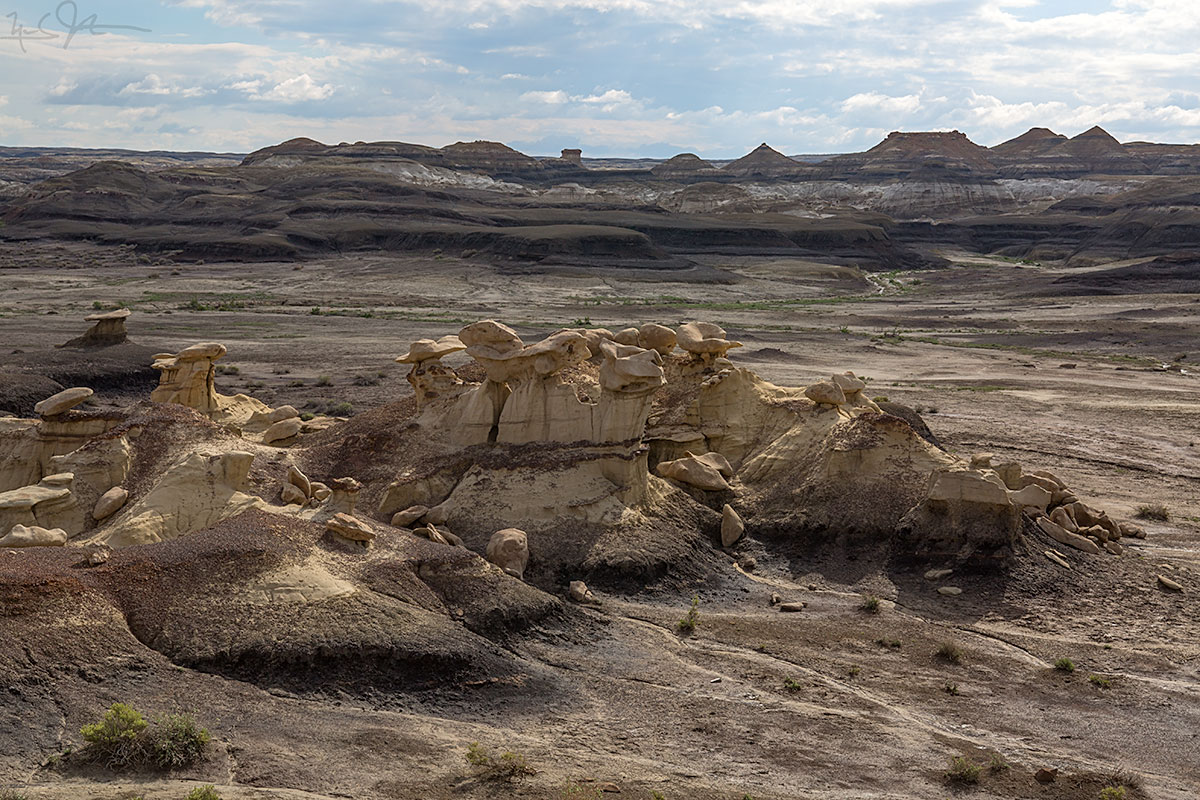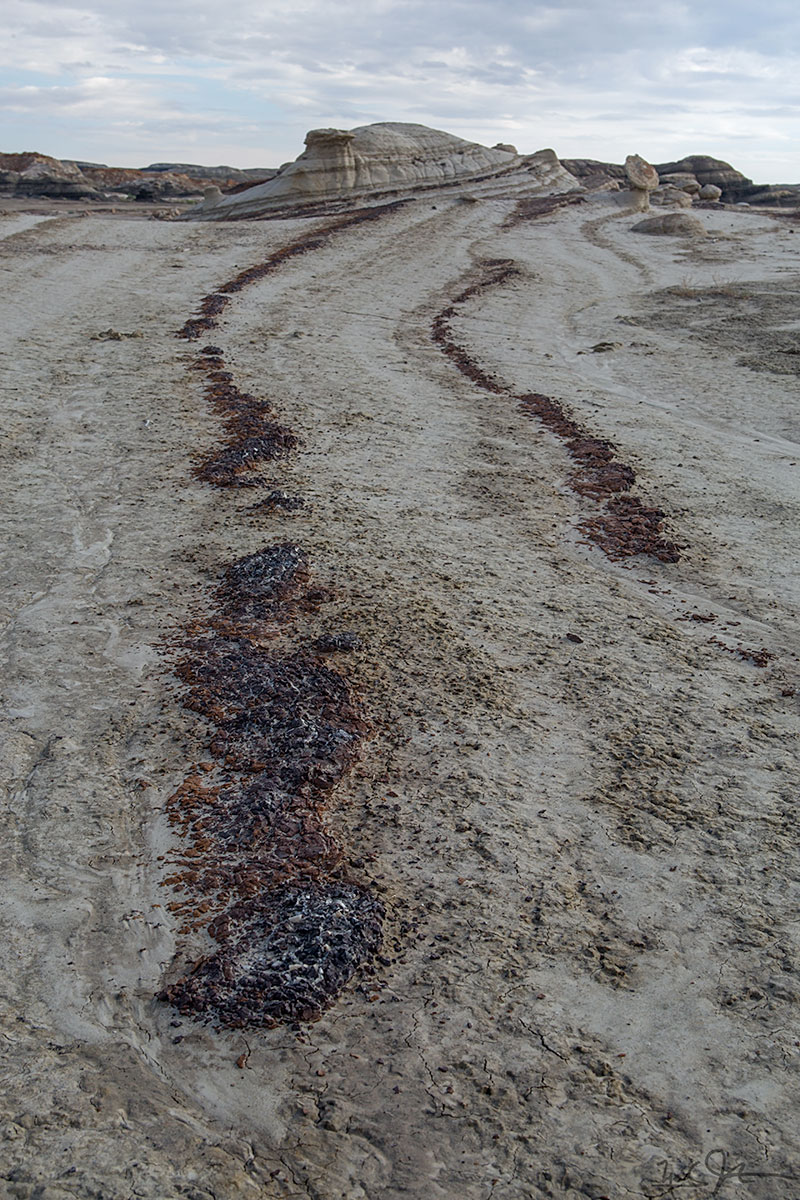Looking west over part of the Painted Desert, with the San Francisco Peaks that lie just north of Flagstaff, AZ on the horizon - about 100 miles away.
Painted Desert National Park/Petrified Forest National Park
These two national parks are connected and lie north to south across US Rt. 66, US Rt. 40, and the Puerco River in eastern Arizona.
The petrified wood is from trees that lived about 225 million years ago. About 60 million years ago, the Colorado Plateau was pushed up by tectonic forces and exposed to weathering and erosion.
There are more than 600 archeological sites, including Newspaper Rock, an area full of petroglyphs pecked into the dark "desert varnish" patina of the rock to expose lighter hues. There are over 650 glyphs in this area, estimated to be 650 years and older.
"Newspaper Rock"
Bad Lands - very, very bad - in a good way.
Some photos from the Bisti - De Na Zin Wilderness area outside Farmington, NM.
Amagisan Doro - original music and photo compilation
"Amagisan Doro", written 天城山道路 in Japanese, means "Amagi Mountain Road". "Amagi" itself is a place name written with the characters 天, meaning "sky" or "heaven", and 城, meaning "castle". The place is on the backbone of the Izu Peninsula of Japan that lies between Suruga Bay and the Pacific Ocean just south of Mt. Fuji, and about 100 km from Tokyo.
When I lived in Japan, I spent many happy hours hiking among the tall cedars, and along the stone terraces where the famous Japanese radish "wasabi" has been cultivated for hundreds of years. Wasabi requires plenty of cold, clean water, and the mountain streams that run down out of the highest points in Izu are diverted into cascading stone-walled beds. The wasabi paste that accompanies sushi and other Japanese fare is made by simply rubbing the root on a rough surface.
The Amagi area is also well-known as the setting for what is commonly regarded as Japan's most famous short story, The Dancing Girl of Izu [伊豆の踊り子].
The music of Amagisan Doro is peaceful and contemplative. It evokes the sounds of two classical Japanese instruments: the koto, a sort of wooden harp with strings that are plucked, and the shakuhachi, a wooden flute.
The music is accompanied by sequence of photos and videos I captured during my walks in those mountains. Enjoy!
